Vegan Sichuan 'Pork' Ragu
Pork ragu is a classic Chinese dish. When I saw it in Lucky Peach's Asian recipes cookbook, I knew I had to try it. The recipe is quite good, but there may have been one sichuan peppercorn too many, and so there was a licorice-y flavor that kind of pervaded through the noodles. I would maybe reduce the recipe to half as many peppercorns, but other than that I loved it.
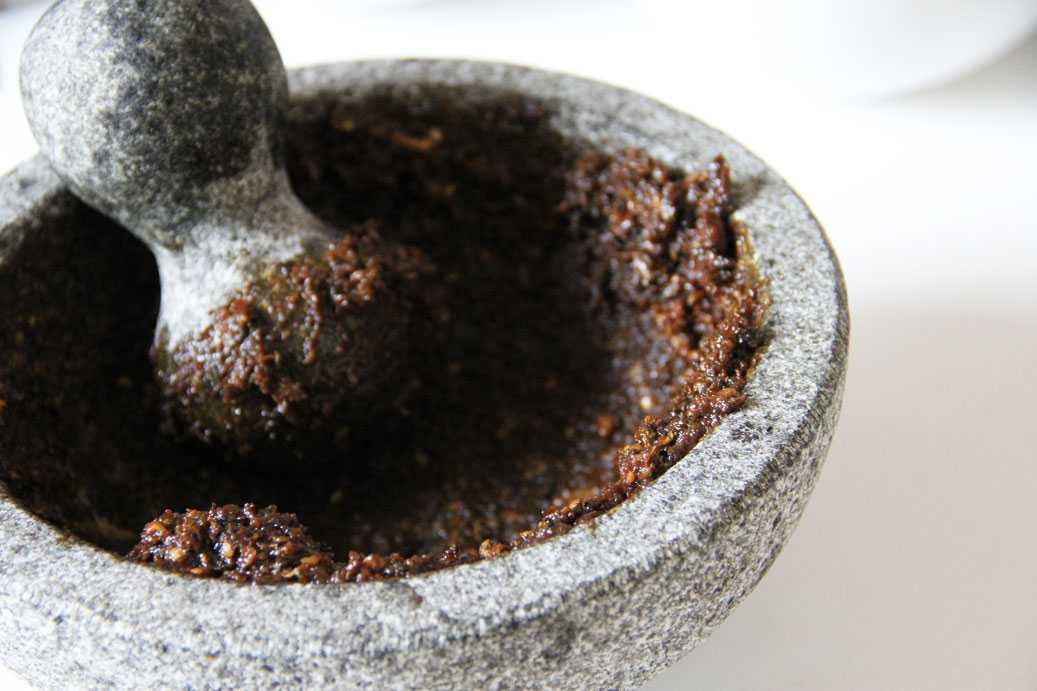
Still though, I thought about how the recipe would taste if I substituted textured vegetable protein (TVP) in for the pork. I personally feel that minced meat really doesn't have much flavor anyways, and so if the texture of TVP matched that of ground meat, which it actually does, then I'm pretty much set. Just make sure the sauce turns out well and I'll have myself an amazing bowl of spicy "pork" noodles.
A word of caution regarding the Sichuan peppercorns is if you are buying them whole, it is probably wise to use a sieve to make sure you are not getting any big bits into your sauce. The texture of the husks are very gritty and sandy, so best to get just the fine grinds.

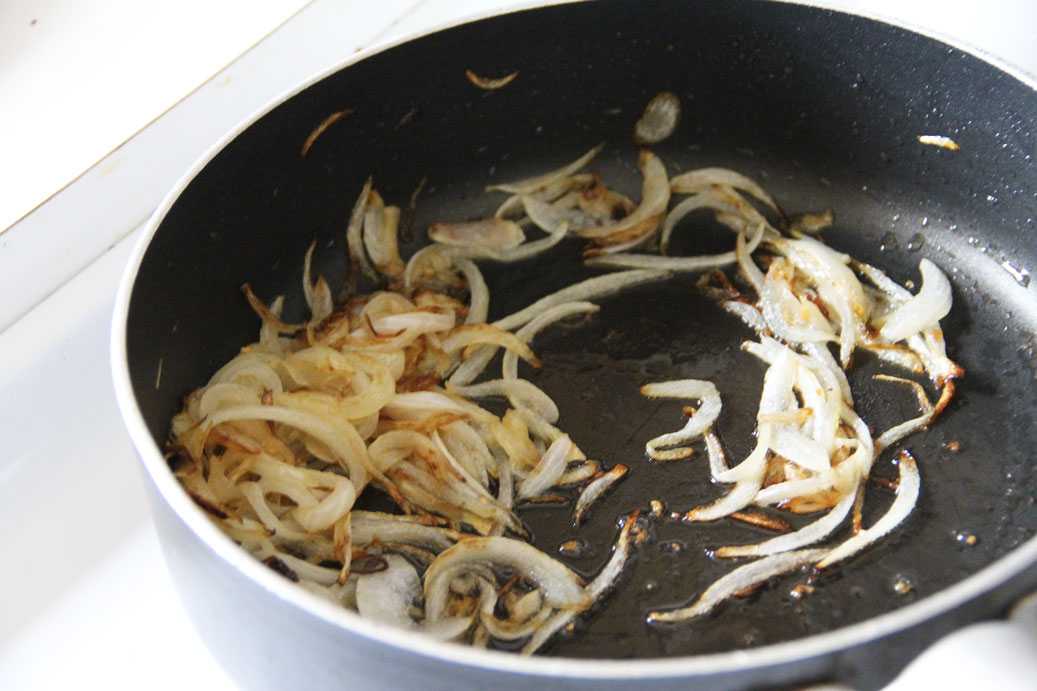

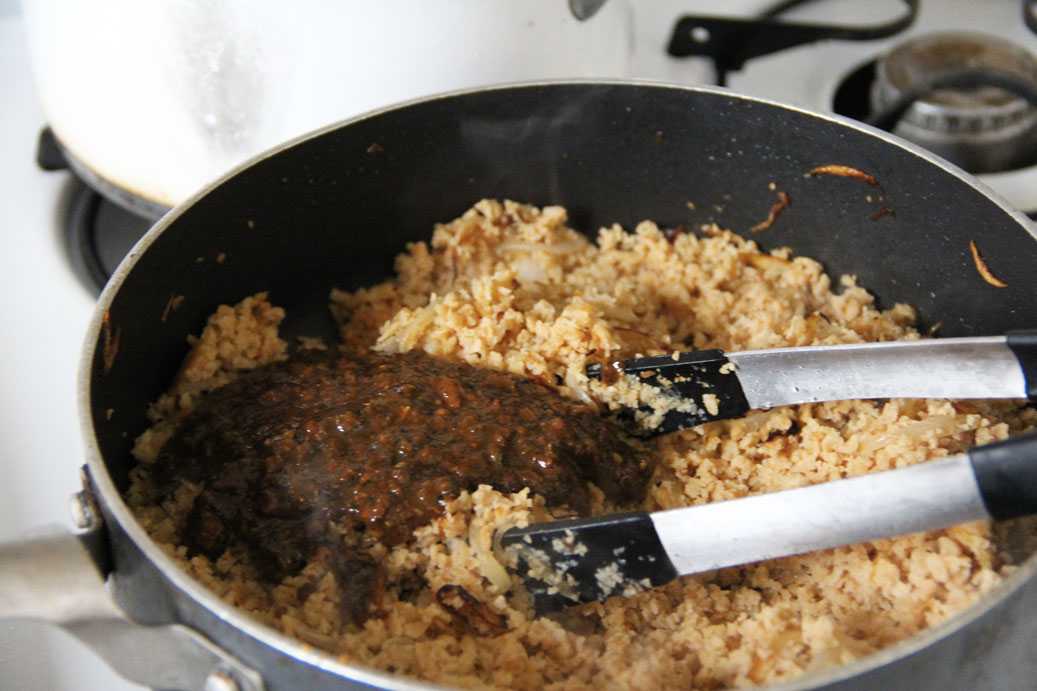
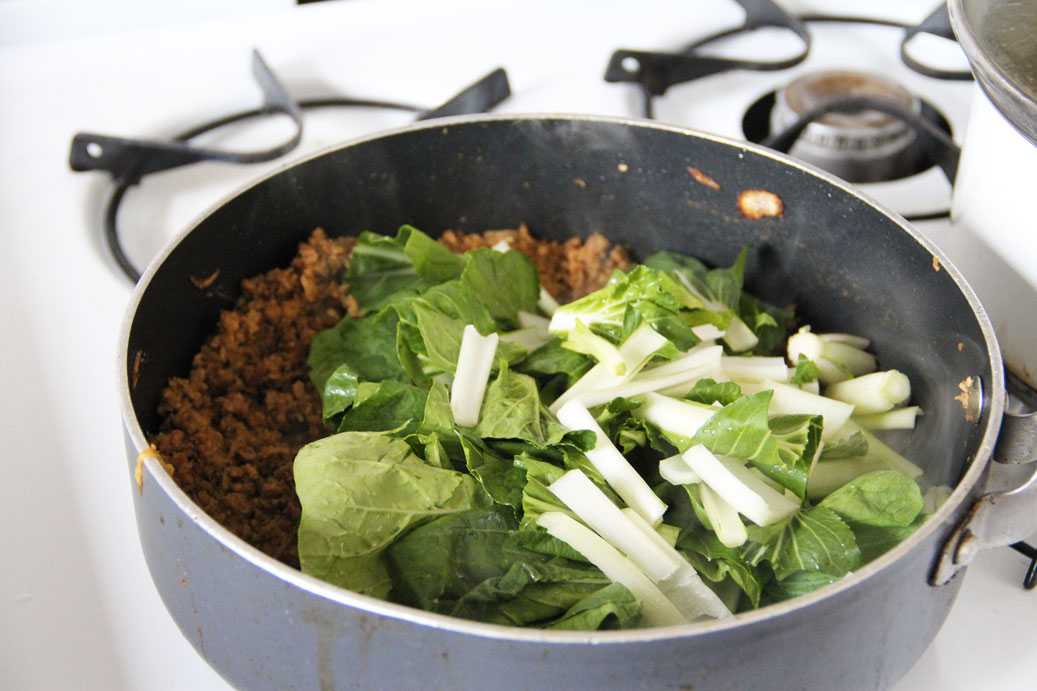


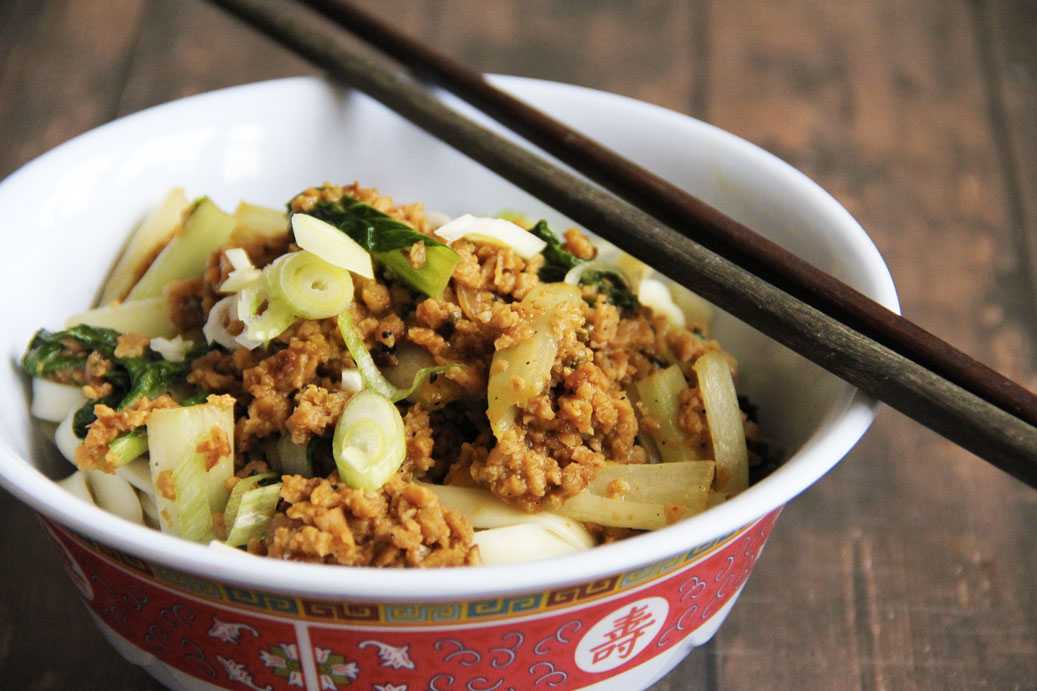
Vegan Sichuan Pork Ragu
(makes 4-6 servings)
- 4-6 servings Chinese wheat noodles
- 2 tablespoons vegetable oil
- 1 large yellow onion
- 2 cups textured vegetable protein
- 1 teaspoon garlic powder
- 2 tablespoons soy sauce, divided
- 1 tablespoon garlic, chopped
- 1 tablespoon gochujang (red chili bean paste)
- 1 tablespoon ssamjang (soybean paste)
- 2 teaspoons Sichuan peppercorns (original recipe calls for 1 tablespoon)
- 1/4 teaspoon Korean chili flakes, more to taste
- 1 tablespoon stevia or sweetener
- 1/4 cup water
- 2 cups bok choy, coarsely chopped
- salt to taste
- scallions to garnish
Directions
- Cook wheat noodles according to instruction. Rinse under cold water and set aside.
- Heat oil in a pan over medium heat. Julienne the onion and cook until onion is softened, about 10-15 minutes.
- Meanwhile, mix the textured vegetable protein with the garlic powder and 1 tablespoon of soy sauce. Rehydrate with 1 1/2 cups of water and set aside.
- Using a blender or mortar and pestle, grind the sichuan peppercorns until fine. Add in the chopped garlic, gochujang, ssamjang, chili flakes, soy sauce and stevia. Blend until smooth. Add in water to dilute. Salt to taste.
- Once the onions are softened, add the textured vegetable protein into the onions. Toss to combine. Add in the blended sauce and cook for about 2 minutes until the textured vegetable protein absorbs the sauce. (Sauce can be stored in an air-tight container at this point.)
- Add in the bok choy along with about 1/4 cup of water. Cook over medium to medium high heat until the bok choy is cooked.
-
Serve over wheat noodles. Garnish with scallions.